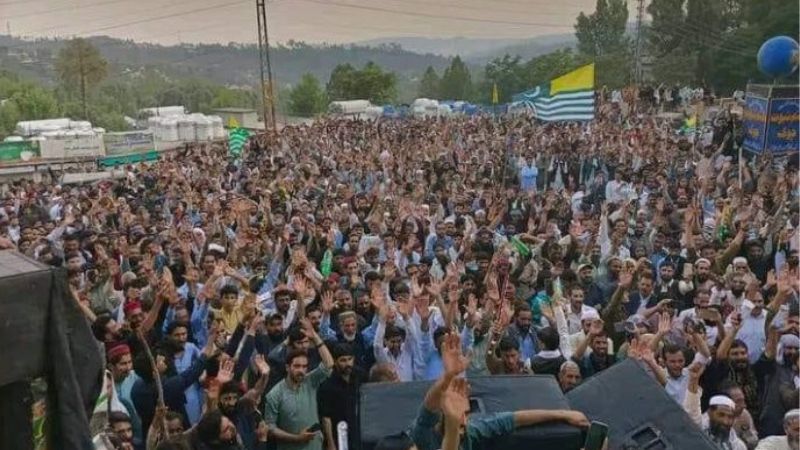Months ago, Defence Minister Rajnath Singh said, “We need to do nothing, PoK will come to us on itself.” What led him to say this? There is a saying that betrayal cuts deeper than the wounds, however, it cuts even deeper when the victim finds out that they were deceived and were kept in the dark. The same is happening with the population of Pakistan-occupied Kashmir (PoK).
In the latest development, the people of PoK have been on the streets for a few days against a Presidential Ordinance. Recently, the puppet President of the PoK Barrister Sultan Mehmood approved the presidential ordinance which criminalises public gatherings, protests, and rallies.
The draconian ordinance includes strict punishment of 7 years and immediate detention. This has been done in the direction of the Pakistan Army, as months ago, a similar Public Order and Peaceful Assembly Bill 2024 was introduced in Islamabad.
What new PoK Presidential Ordinance say?
It is worth noting here that the PoK ordinance empowers the Pak Army-appointed District Commissioners (DCs) to impose penalties and detain anyone who they find in violation of the orders. According to the ordinance, only those with approval from the DC office can protest against the administration. The local population is disgusted with the ordinance because they see it as another mischievous way to curb dissent.
But the question is why does Pakistan desperately want to crush protests in the PoK?
Last year around September, PoK saw the largest-ever protest when women, children, and students held separate but unified protests demanding the fulfillment of the Charter of Demands.
The COD finds mention of electricity tariff rate cuts and the availability of wheat flour at subsidised rates among others.
As PoK is not a Pakistani state, protestors asserted, it must get benefits under the UN regulations, which also include subsidised basic amenities.
To begin with, unlike India, Pakistan had no claim to the territory, so it used tribal attacks to snatch a portion, now known as PoK, in 1947. Since then, Pakistan has been illegally occupying the region on the basis that it supports Jammu and Kashmir’s independence and will respect combined J&K’s decision. But in reality, it was all a facade to put India as a perpetrator. According to the UN’s initial mediations, Pakistan was asked to vacate PoK first, which it never did. And because of that it has no legal authority to usurp the region as its state.
So, Pakistan had to keep the region as merely an administered territory and hence PoK is eligible for facilities under the UN charter.
However, due to the economic crisis, Pakistan shed the burden on PoK and POGB (Pakistan occupied Gilgit Baltistan) even more than the other states, and subsidies were terminated.
Pakistan’s ban on protests
The resentment among the masses escalated even more as Pakistan on the pretext of Independence exploited PoK’s resources leaving the local Kashmiris in dismay.
For instance, the region generates nearly 3000 MW of electricity but has a demand of only 400 MW. Still, the region faces load shedding. To the worse, the cheaper electricity is transmitted to Punjab province and then sold at high prices to PoK.
The protests sent the occupying govt to its knees. But in a bid to dodge the demands, the occupying PoK govt started deflating the issues on Pakistan’s instructions.
The region once again saw boils in May this year, when Pakistan Army was rushed into the valley to use force against Kashmiris. The anger in public was so fierce that they raised slogans of ‘either rights or no rule.’ This time the protests turned violent and many Pak Army officials were publicly beaten. In Dadiyal, the Assistant Commissioner’s trousers were hanged on a chowk. At least 70 protestors were arrested but were released under public pressure.
